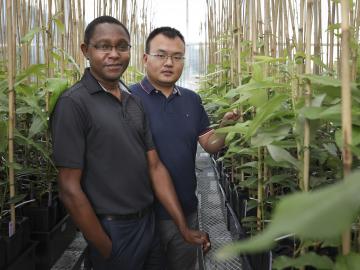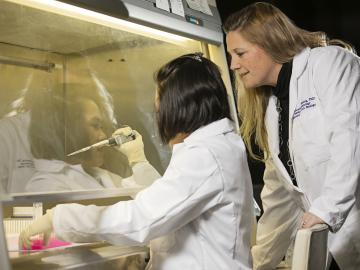Filter News
Area of Research
- (-) Biological Systems (2)
- (-) Isotopes (3)
- Advanced Manufacturing (4)
- Biology and Environment (56)
- Biology and Soft Matter (1)
- Building Technologies (4)
- Clean Energy (97)
- Climate and Environmental Systems (2)
- Computational Biology (2)
- Computer Science (1)
- Electricity and Smart Grid (1)
- Energy Frontier Research Centers (1)
- Fossil Energy (1)
- Fuel Cycle Science and Technology (1)
- Functional Materials for Energy (2)
- Fusion and Fission (15)
- Fusion Energy (1)
- Materials (95)
- Materials for Computing (6)
- National Security (27)
- Neutron Science (40)
- Nuclear Science and Technology (14)
- Nuclear Systems Modeling, Simulation and Validation (1)
- Renewable Energy (1)
- Sensors and Controls (2)
- Supercomputing (62)
Media Contacts

Oak Ridge National Laboratory scientists recently demonstrated a low-temperature, safe route to purifying molten chloride salts that minimizes their ability to corrode metals. This method could make the salts useful for storing energy generated from the sun’s heat.

Researchers at ORNL explored radium’s chemistry to advance cancer treatments using ionizing radiation.

More than 50 current employees and recent retirees from ORNL received Department of Energy Secretary’s Honor Awards from Secretary Jennifer Granholm in January as part of project teams spanning the national laboratory system. The annual awards recognized 21 teams and three individuals for service and contributions to DOE’s mission and to the benefit of the nation.

For decades, biologists have believed a key enzyme in plants had one function—produce amino acids, which are vital to plant survival and also essential to human diets. But for Wellington Muchero, Meng Xie and their colleagues, this enzyme does more than advertised. They had run a series of experiments on poplar plants that consistently revealed mutations in a structure of the life-sustaining enzyme that was not previously known to exist.





